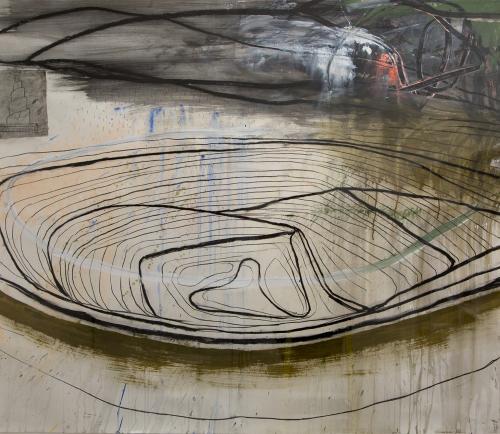Innocence [7]
By 2004, Kennecott Copper was the largest metropolitan landholder in the U.S. In an effort to capitalize on their unused land, the company commissioned a master-planned community. They named the resulting development Daybreak, an energy-efficient community in the Oquirrh foothills, whose every stage of development was overseen by the company. Built with sustainability in mind, all homes were built within a five-minute walk of a major amenity such as a grocery store or park, reducing dependency on car travel. The new homes were built in a neo-Victorian style and brightly colored. Miles of walking paths surround a man-made lake for fishing and boating. One day in high school, some friends suggested we drive out to take a look at the new development. We’d heard it sprung out of the desert overnight, beautiful. We drove north after school and arrived close to sunset. The houses were multicolored and silent, a Disneyland mix of new materials and old design. Freshly laid train lines ran down the middle of the empty streets, the new planted trees spindly and fragile. Only every fourth house or so looked occupied, the valley lights pulsing out of the darkness behind and below.
Lippard writes that the spiral is “seen as a dynamic but meaningless shape… an acquired abstraction, laid over its varied cultural significances… This leaves a free field, a tabula rasa in itself, where an artist can be formally influenced by these images as though they had no meaning, and at the same time can capitalize on meanings sensed, if not seen.”12 I, too, don’t know how to read the spiral. Many have pinned meanings on its form only for it to twist out of them. Does it evoke recursive, non-linear, non-hierarchical time, and therein a kind of liberation? Or, as in Charles Simonds’ Three Peoples, a “world entirely created by… [will]” seeking “an ecstatic death… to achieve both the greatest height possible and to predict the very moment of collapse”?13 I try to read it like a glyph, place it in a sentence. But the spiral leaks as much meaning as it attracts.
Of all spiral buildings, Wright’s Guggenheim Museum is the only expanding spiral successfully constructed. The spiral gets wider the further up you go; enclosed, it opens to the sky.
After I visit the Jetty, I have trouble writing about it. How could I write about something so written over, that may itself be a writ? I don’t know what to make of it, and at the time I mistake this for disinterest. On first seeing the Jetty I experienced something like the artist Laurie Palmer’s reaction to the Bingham Canyon Mine: bored by its claims to “bigness,” which “wows and obscures,” she turned away.14
I find this in my notes, the only thing I’d written after my first visit:
I could not keep the stencil on. It kept loosening and coming off. / When lost without water, I put a stone under the tongue.
Smithson writes: “A sense of the Earth as a map undergoing disruption leads the artist to the realization that nothing is certain or formal. Language itself becomes mountains of symbolic debris.”15
In his film about the Jetty, Smithson runs the spiral, staggering over the uneven surface. A helicopter, its spiraling blades, ruffles the water and Smithson’s hair below as it follows him with a camera. He shields his face from either the force of the winds or the gaze of its lens from above. Art historian Jennifer L. Roberts describes what happens next: Smithson “stands at the edge for a few moments, hesitating over the water as if waiting to be taken up into the recursive spiral himself and to enter some final transcendent crystallization of time and matter. But then (this salty apotheosis not having occurred) he turns, in a gesture both tragic and funny, to walk slowly back out of the spiral toward the shore.”16
12 Lippard, Lucy R. Overlay: Contemporary Art and the Art of Prehistory. The New Press, 1983.
13 Lippard, Lucy R. Overlay: Contemporary Art and the Art of Prehistory. The New Press, 1983.
14 Palmer, Laurie. “Copper.” In the Aura of a Hole: Exploring Sites of Material Extraction, Black Dog Publishing, London, UK, 2014, p. 92.
15 Smithson, Robert, and Jack Flam. “‘A Sedimentation of the Mind: Earth Projects (1968).'” Robert Smithson: The Collected Writings, University of California Press, Berkeley, Calif. Etc., 2017.
16 Roberts, Jennifer L. “Spiral Jetty/Golden Spike.” Mirror-Travels: Robert Smithson and History, Yale University Press, New Haven, CT, 2004, p. 139.

